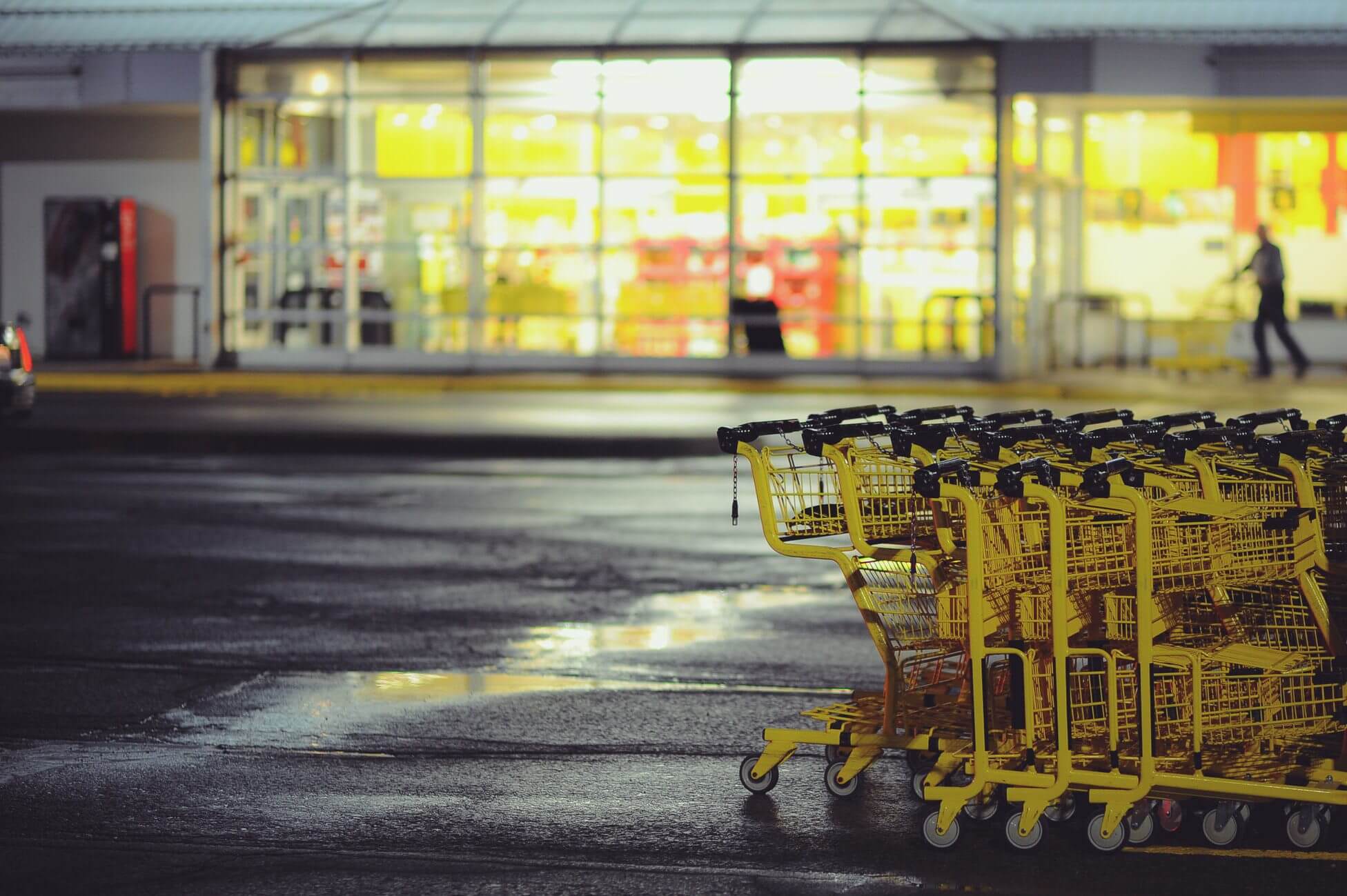The online grocery wars are heating up and the stakes are far bigger than any battle between Amazon and Walmart. The real story here is the automation of grocery stores and the service economy more broadly.
Amazon’s Grocery Expansion
This week, Amazon announced it is eliminating fees for grocery delivery in the U.S. The move is just the latest in the company’s aggressive expansion into physical and online grocery businesses. The first shock waves came in August 2017 with its $13.7 billion acquisition of Whole Foods. Then, in Seattle, just five months later, the company opened the first outlet for a new automated convenience store format called Amazon Go. Amazon also appears near to rolling out of a new chain of supermarkets aimed at expanding beyond the upmarket Whole Foods brand.
Amazon’s motivation for expanding into online grocery boils down to a large growth opportunity. The U.S. Department of Commerce estimates that consumers spent $513.61 billion online in 2018, or about 14% of the total $3.6 trillion U.S. retail market(excluding automobiles, gasoline stations and restaurants). The total retail groceries market in the U.S. is $655 billion, and of that, online groceries account for $20 billion, or just 3%. In other words, the percentage that online sales accounts for in groceries lags considerably behind other retail categories. Amazon, with its technical prowess, is well positioned to disrupt this market and grab a sizeable portion of the revenues in the process.
Cost Cutting in Groceries
To understand the way this disruption is unfolding, it’s important to understand what has been happening in the traditional groceries market. Over the last few decades, competition from low-cost giants like Walmart, Target, and Costco has dramatically suppressed prices—and profits—among grocers. Between 2012 and 2017, more than 50 percent of the economic profit of publicly traded grocery retailers has evaporated.
As consolidation sweeps through grocery retailers, the remaining giants invest heavily in automation technologies to further lower their operating costs. Logistics and inventory management are an important part of the puzzle, but as with all service businesses, the real opportunity to boost profits lies in reducing the cost of engaging shoppers.
Automated Self-Service
The key to reducing these costs is automation technology that enables end users to serve themselves. “Automated self-service” is what automation looks like when it meets the service economy and the grocery businesses is no exception.
In other words, what looks like a battle between Amazon and more traditional retail giants like Walmart is actually something much bigger. We are now witnessing the automation of the grocery business. This automation process looks very different from the huge combines and industrial robots that swept through the agricultural and manufacturing sectors.
In the service economy, end users play a critical role in the value chain, since there is no shopping without shoppers. Traditional retail grocers served shoppers by employing aisle stockers, cashiers, baggers, and other staff. Early attempts to automate that work essentially just shoveling it onto shoppers through self-checkout machines. These machines didn’t work that well and even though many of us have grudgingly begun to accept this new form of “shadow work,” most of us don’t like it.
For automation to really transform the groceries business, these processes need to be rethought. Simply automating old processes rarely works. Instead, new players like Amazon and Instacart and established players like Walmart and Target are disrupting and automating the retail grocery business by merging it with the online grocery business. By building a new generation of user interfaces, these grocer giants of the future are coordinating Internet-scale networks of shoppers in their highly distributed work of shopping for groceries.
Automated self-service technologies are what enable this massive coordination of end user work. These systems are what enable the new grocery giants to amass the huge quantities of data needed to make their automation ever smarter and more efficient—and with minimal assistance from human employees.
This is the future of groceries and the future of the service economy more generally.
About the Author
This article was written by Gideon Rosenblatt of The Vital Edge. Gideon ran an innovative social enterprise called Groundwire for nine years. He worked at Microsoft for ten years in marketing and product development, and created CarPoint, one of the world’s first large-scale e-commerce websites in 1996. The Vital Edge explores the human experience in an era of machine intelligence.






























